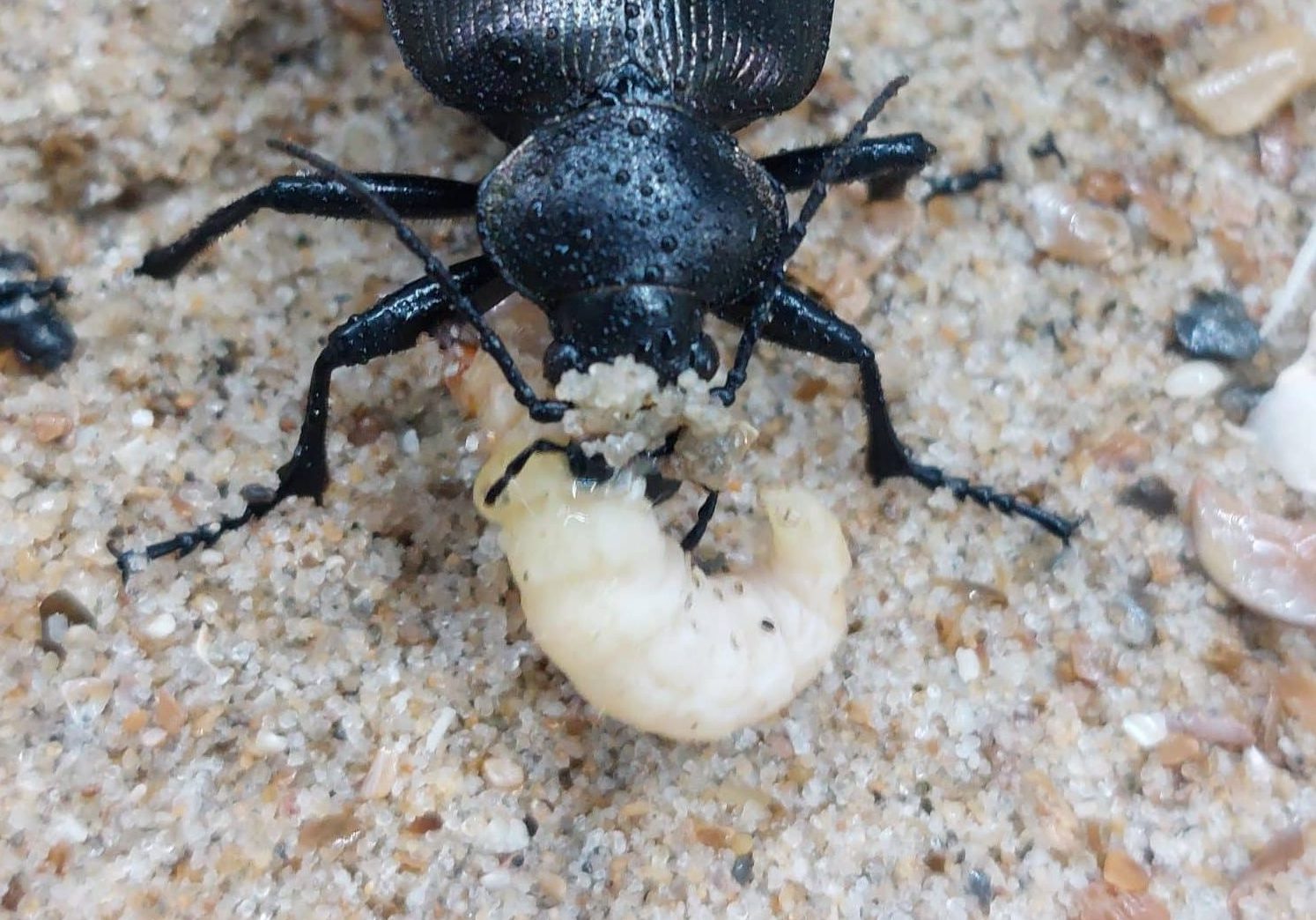A new spring, a new beginning …
Not just outside life is moving up a gear. The first forest caterpillar hunters are already active again in the labs of the Provincial Nature…
Not just outside life is moving up a gear. The first forest caterpillar hunters are already active again in the labs of the Provincial Nature Center in Limburg and of Campus Vesta in the province of Antwerp. These beetles were delivered here from Turkey in 2022, to participate in our experiments on the ecological control of the oak processionary caterpillar. After the summer they crawled underground for a well-deserved winter rest. This week the first specimens of this beautiful beetle species have reappeared, hungry and looking for food. No oak processionary caterpillars unfortunately, because we don’t expect them until next month. They have to make do with earthworms for now.
The forest caterpillar hunter is a striking beetle species that virtually disappeared from Belgium and the Netherlands last century, partly due to the excessive use of insecticides. However, last year he reappeared, and suddenly about twenty individuals sere reported in Flanders and the Netherlands. Still too early to speak of a comeback, and certainly not in those numbers to keep the processionary caterpillar under control. So if we want to use the beetle to combat that caterpillar, a breeding program, such as with the Turkish beetles, will be necessary.
Mid-term conference LIFE Oak Processionary Caterpillar
While nature was in its annual rest period, the project team did not sit still. A lot of work went into organizing the interim conference. We want to show the preliminary results of our research to policymakers who do not want to wait for the final results of the project. It is also the time to examine the experiences of our partner provinces and ambassador municipalities in the field. Is it indeed worth using biocides less and more accurately? How do you start transforming your management, and what are the points of interest? What are the reactions of their residents, and how do they deal with them? Themes that will certainly be discussed at this conference. You can then expect a report and excerpts from the conference on this site.
A new season, a new project coordinator
Ann Milbau, the project coordinator who helped start and shape the LIFE Oak Processionary Caterpillar project, took on a new challenge closer to home. Johan Neegers has taken over the project from her since the beginning of March. A brief introduction:
“I already applied for the project two years ago, because I thought it would be a great opportunity to combine my background as a biologist and experience as a project manager in a project that can positively influence both nature and human well-being. Unfortunately I had to leave the honor to Ann. So when I was given the opportunity to take over her role, I didn’t hesitate for long.”
“I don’t have much experience with the oak processionary caterpillar yet, but I do have experience with its southern brother, the pine processionary caterpillar. During a hike in the south of France, I once passed through a pine forest that was literally infested with caterpillar nests. An experience that I and my hiking companions did not leave without the characteristic red spots and itching. Fortunately, in practice things usually don’t go that fast, because due to climate change, the latter species is also coming our way.”
“What I expect from the project is for it to make an essential contribution to the reduction of insecticides. These not only have an impact on the oak processionary caterpillar, but also on the entire biotope that exists in oaks. We know that up to four hundred species of insects depend on that tree for their survival, and dozens of species of birds and mammals benefit from it. So if we can introduce control methods with less impact, I believe our mission has been accomplished.”
